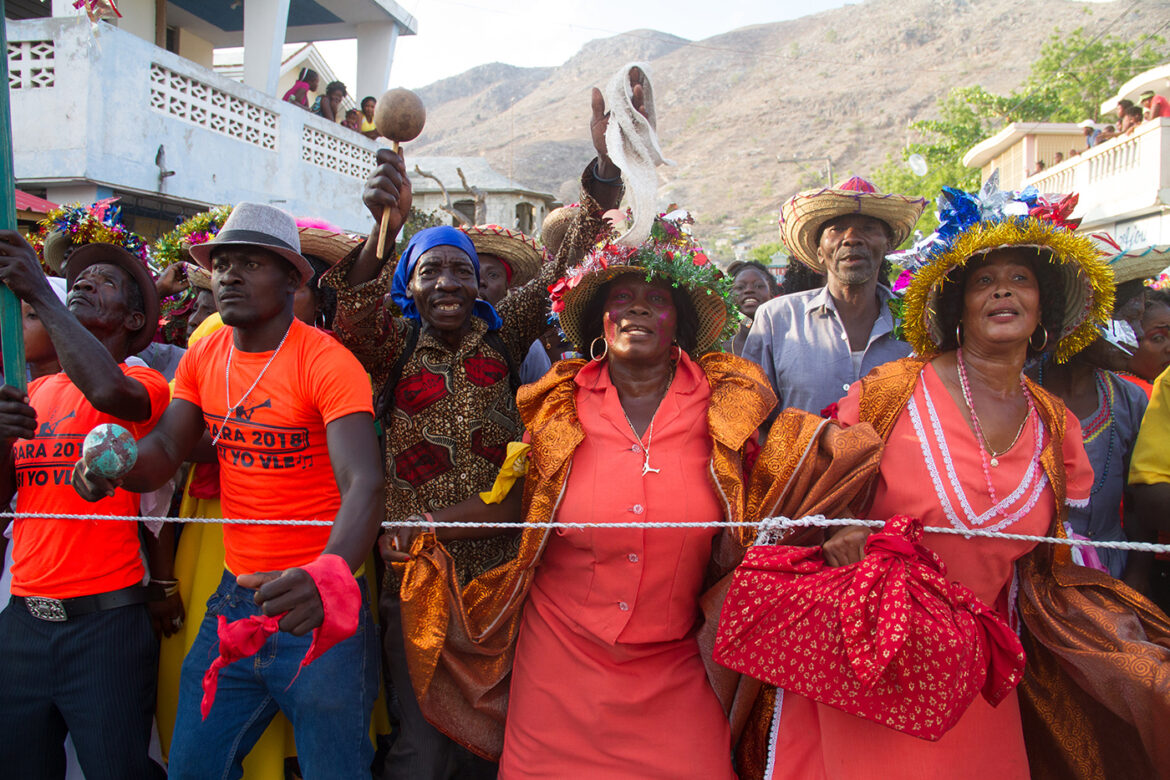Overview:
We revisit the enduring affect of the Taino folks on Haiti’s tradition, from Vodou and Creole language to music and celebrations. Regardless of their close to extinction within the 1500s, Taino traditions proceed to form Haiti’s identification at present, particularly by means of phrases and cultural practices.
Editor’s Observe: This text, initially revealed on Nov. 24, 2021, is being republished from The Haitian Instances archives to share among the finest vacation reads, suggestions, tips, and recipes.
In honor of Native American Heritage Month, the place Indigenous tradition, resilience, and little-known historical past are highlighted, we invite you to learn from our archives in regards to the Taino folks. Earlier than Europeans arrived within the Caribbean, the Taino inhabited the island of Hispaniola.
The Taino, native inhabitants of the Caribbean have impacted Haiti’s faith, music, language and celebrations, amongst different cultural components, consultants and linguists say.
Though the Taino inhabitants was largely decimated by the mid-1500s, according to historians, their affect will be seen within the Vodou faith and in Haitian Creole vocabulary, probably the most notable instance being Ayiti, or “land of mountains,” the phrase from which the title of the nation Haiti is derived.
“They had been additionally enslaved, the Tainos, after which when the Blacks or Africans had been introduced, they [enslaved Africans] needed to create their very own language,” stated Yvon Lamour, a Massachusetts-based Creole teacher and member of the Haitian Creole Language Institute. “Individuals didn’t simply communicate one language, they needed to create Haitian Creole.
The Taino influences in music, faith
The Spanish first introduced enslaved Africans to Hispaniola in the beginning of the sixteenth century. Nonetheless, the inhabitants of the Taino, an Arawak subgroup that resided on Hispaniola and all through the Caribbean, was worn out in less than 50 years by illness and enslavement.
The century characterised by Spanish rule “little doubt noticed some cultural transmission between the pre-Columbian inhabitants and African slaves,” historical past professor David Geggus wrote within the social analysis journal “New West Indian Information.” But, Geggus famous that transmission was restricted, since Tainos and Africans tended to dwell in separate places.
When the French assumed management in 1697 there have been just about no Tainos left on the western third of Hispaniola, Geggus wrote. But, whether or not by direct cultural transmission within the prior century or appreciation of the Indigenous inhabitants that got here earlier than, Haitians have adopted a number of cultural practices from the native Taino folks.
“The inclusion of Taino axe-heads and collectible figurines among the many sacred objects of some voodoo temples does counsel an consciousness amongst Haitians of the vanished Amerindians,” Geggus wrote. Nonetheless, he famous, it isn’t essentially proof of a declare made by earlier students, of direct Indigenous affect on the Vodou faith.
Carnival celebrations in Haiti have integrated native traditions, as properly, with papier mache masks common within the likeness of animals and rara bands parading down the streets.
Musicians in rara teams carry out on bamboo trumpets and drums, together with devices just like the güiro, an open-ended percussion instrument with notches minimize on one aspect. The güiro can be standard in Spanish people music, and historians trace its origin to the Arawak Taino folks.
Maracas, one other frequent carnival instrument, even have native origins. Though historians disagree on which Indigenous American tribe first began utilizing maracas, they had been widely used by the Tainos within the Caribbean.
Haitian Creole formed by Indigenous predecessors
When Haitians gained independence in 1804, they adopted the title Ayiti, which the Tainos used to check with your complete island of Hispaniola. Many meals loved by the Indigenous inhabitants of Hispaniola nonetheless bear the identical, or very related, Haitian Creole names.
“Individuals have collected some phrases which might be from the Tainos,” Lamour stated. “Meals [words] for probably the most half.”
Historically, Tainos would eat their maní, or peanuts, with cassava bread generally known as casabe. Haitians have derived Creole phrases from these two meals, Lamour stated. Haitians use manba in reference to peanut butter, and the Haitian Creole phrase for cassava is the similar-sounding kasav.
Different Haitian Creole words the Tainos used embrace lambi, or conch, and mabi, the title of a fermented beverage. The Creole phrase for pineapple, anana, additionally came from the Tainos.
On the subject of Haitian Creole, West African languages offered the inspiration, stated Lamour.
“You’ll be able to see the inspiration within the syntax,” Lamour added, about Haitian Creole. “Taino, it’s principally within the tradition and a few vocabulary, folks have collected phrases that had been from the Tainos.”

